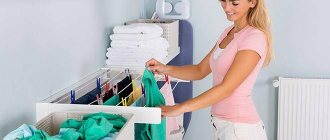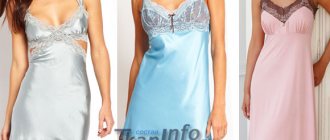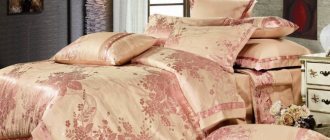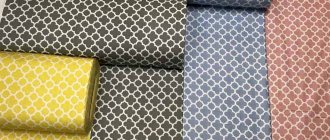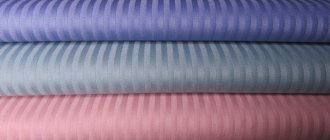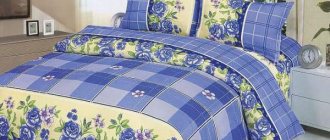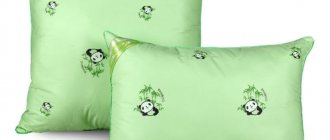History of invention
At the beginning of the last century, DuPont in the USA worked on the creation of the following materials, which are still actively used today: nylon, Kevlar, napalm and Teflon. In the middle of the 20th century, the outstanding chemist Joseph Shivers, who worked for this company, conducted experiments with thermoplastic elastomer. During the observation, he noticed that the material stretched well and had high ductility after heating. Thus, an employee of the company created a high-strength fiber. The density of the fabric was 1.1-1.3 g/cm³.
Elastic
20 years later, elastane was used in girdles, corsets, tracksuits and underwear such as stockings or tights. Clothing based on this fiber quickly became popular. Elastane consists of elastomeric polyurethane threads that are synthesized from polyurethane rubbers.
Huge selection of elastane palette
The originality of the fibers
Advantages and disadvantages of elastane
The product combines a lot of positive characteristics that the material conveys in combination with other threads. The best combination is cotton, linen, wool. It has high elasticity and wear resistance. Depending on the type of fiber, it has a density of 1.1 to 1.3 g/cc, which allows you to wear tight-fitting, non-transparent items.
Some types of spandex (except lycra) are not recommended for allergy sufferers. The material stretches and fades when exposed to sunlight and chlorinated water.
Advantages and disadvantages of Lycra
The manufacturer Invista manufactures products in two directions:
- LYCRA HyFit® Fiber, designed for diapers and other personal care products.
- LYCRA® Fiber, a brand that has been around for over 50 years. Fibers allow the body to breathe and feel comfortable, without stretching or deforming. Lycra clothing is durable and practical.
An additional advantage of the fiber is its low manufacturing cost, which allows manufacturers to produce high-quality clothing and sell it at an affordable price.
The disadvantages include the same disadvantages attributed to elastane.
Production Features
What kind of material is elastane? The yarn is made up of flexible segments that are held together by rigid ligaments. Thanks to this, synthetic elastic fabric is highly elastic, like rubber made from rubber.
Spandex can only be created in laboratory conditions. The main raw materials are polyurethane rubbers. How to get elastane material? The methods for creating this fiber are as follows:
- transformation during a chemical process;
- creation from a specialized solution;
- injection, for example, from molten polymer.
What is elastane fabric? After the resulting threads have hardened, they are formed into bundles. Then they are washed well and dried thoroughly. After this, the threads can be wound onto spools.
Lycra and elastane: the same thing?
What is elastane and how is it different from lycra? Comparing these two concepts is tantamount to comparing the terms “fruit” and “apple”. You need to know: are elastane and lycra the same thing or not? Lycra is a segmented polyurethane that is made from man-made elastane fibers. The lycra thread stretches perfectly. It can lengthen by 6-8 times. Lycra and elastane are considered the same material.
Lycra
Note! There is no difference between these concepts, since they are the same material.
Modern synthetic fibers - lycra and elastane
Both representatives belong to the group of polyurethane threads. Another name for this category is “Spandex”. The word comes from the English word Expand, which means “Stretch”. These also include fibers such as lycra, vairin, vorin, espa, neolan, spanzel. Outside of North America, Spandex is usually called elastane, that is, these abbreviations are synonymous.
What is elastane
The product is a knitted thread (“pigtail”), which goes through several stages of production. The threads must first harden, then they are washed and dried. When finished, they are wound onto reels. This is a wet manufacturing method.
What is lycra
Lycra is a trademark of Invista (USA). It is a type of elastane with strength and elasticity characteristics. Previously, lycra was called any type of spandex, which the brand’s manufacturers did not like. Used for sewing tight-fitting clothes. It is not used in its pure form.
The fiber is a twisted thread that is produced primarily using the dry method. Oil is applied to the threads, then the threads are wound onto spools, which are ultimately heat treated at a temperature of 80 degrees.
Composition and properties
Elastane is a material made from segmented polyurethane, where flexible segments are connected to each other by strong ligaments or “bridges”. This further strengthens the strength of the threads.
2D view
What is elastane? Spandex is divided into two types:
- two-dimensional (fabric stretches only in one direction);
- four-dimensional (the material simultaneously stretches both in length and width).
4D view
The positive characteristics of this fabric are as follows:
- air passes through the lycra freely, allowing the skin to breathe;
- high wear resistance compared to other fabrics;
- clothing made from lycra is especially light, since the diameter of the threads is very small;
- the fabric retains its original appearance without changing after washing or drying;
- clothes do not fade and are resistant to contact with water;
- Thanks to the high density, a stretch effect is achieved.
How much stretch does the material have?
The elongation is very high. The thread can lengthen 8 times. At the same time, the fabric has excellent elasticity. Even after strong stretching, the clothing will return to its original shape, similar to rubber quality.
Carnival costume
Quality characteristics of lycra
Lycra is so widespread due to its main advantage - good stretchability (the thread can stretch 6-8 times), but its other quality characteristics are no less important:
- Elasticity - after the stretching of the thread is completed and no more force is applied, the lycra returns to its original shape;
- Resistance to stains - to clean any stain, most often it is enough to simply rinse the material in clean water;
- Thinness - the lycra thread has a very small diameter, making it very easy to weave into other fibers, both artificial and natural, which makes this material universal in use;
- Air permeability - in products with lycra threads, the skin will “breathe”, since this material does not interfere with air circulation;
- Strength and wear resistance - weaving lycra threads into the main material prolongs the life of the resulting fabric by approximately 2 times;
- Drapability;
- Lightweight - the weight of lycra is very light;
- Density - its value is 1.1-1.3 g/cm³, due to which the stretch effect is obtained, so popular among the weaker half of humanity;
- Resistance to external influences: lycra does not fade in the sun, does not collapse in salt water and does not allow color to wash out;
- Ease of use: items containing lycra practically do not wrinkle , wash well and do not deform even after prolonged wear.
Combination with other materials
Cotton does not have enough elasticity, so a little elastane fiber is often added to it to make clothes more elastic. If this material is not added to cotton, then any suit will not stretch well and wrinkle a lot, even despite ironing.
If cotton fabric contains elastane, the clothing has the following properties:
- increased strength;
- increased extensibility;
- the service life of the suit is extended;
- clothes practically do not wrinkle;
- the fabric does not stretch after washing;
- “Stretch” perfectly fits the figure.
Shorts
95% cotton, 5% elastane: what kind of fabric is this?
This textile is called “satin” or “stretch cotton”. The main advantage of the elastane/cotton ratio is the “breathable” effect. Most often, business suits or dresses are made from this fabric. The material is highly durable and practical. The clothes will fit perfectly. She does not need special care.
Satin differs from other fabrics in its special shine, thanks to which any evening or cocktail dress looks luxurious. Caring for such things is quite simple. You can wash clothes in low water temperature. Strong spinning is contraindicated.
95% cotton, 5% elastane
92% cotton, 8% elastane: what kind of fabric is this?
Material with such a percentage is pleasant to the touch. Its properties are almost the same as the previous version of the fabric. It also allows the skin to breathe, and the clothes become more durable. Over time, it practically does not change its original shape. Most often, underwear or home clothes are made from this fabric. The material does not cause allergic reactions.
Viscose 95%, elastane 5%: description
The structure of viscose resembles the fibers of natural plant materials. Viscose absorbs excess moisture, while the clothing is breathable. This percentage combination of fibers allows the fabric to increase its elasticity. Statistical electricity will not accumulate, and the fabric will remain light.
Viscose 95%, elastane 5%
Discussion Questions: What are the differences between the different fibers?
What is the difference between Lycra and elastane?
Comparing two fibers is incorrect and is equivalent to comparing the term “Car” and the brand of a popular car. Lycra is elastane with certain properties and characteristics.
How does spandex differ from other man-made fibers?
As mentioned above, Spandex is elastane, that is, the entire group of polyurethane synthetic threads. They contain polyurethane rubber. Artificial threads contain viscose, obtained from cellulose and chemical impurities. Such threads are easier and more cost-effective to produce than spandex. However, they can shrink significantly after washing.
Application and care
Elastane in mixed fabrics is used in the production of clothing:
- for sports and dancing;
- costumes for people are made from thick spandex;
- involved in skiing and wrestling.
- Lycra is used in the manufacture of swimsuits and swimming trunks.
- Ideal for sewing carnival and circus outfits.
Any item should be cared for in accordance with the instructions. But there are several universal rules that apply to any elastane clothing.
Swimsuit
How to wash
The basic rules here are as follows:
- If washing is done by hand, then the water should be at room temperature. Washing powder is used soft for delicate fabrics. There is no need to twist or wring out the clothes too much.
- In the washing machine, select the “hand wash” or “delicate” mode. The water temperature should not exceed 40 degrees. A spin of 400 rpm is quite enough.
- white clothes are washed separately from colored items.
- No conditioners, bleaches or stain removers should be used.
How to dry
General recommendations:
- Under no circumstances should such clothes be left stretched out for a long time to dry. Prolonged drying and further storage on a hanger can deform the clothes.
- Direct sunlight should not fall on a wet item.
- dry only on a smooth surface. In this case, the thing must be straightened.
- Tumble drying is prohibited.
Costume
Important! During ironing, high iron temperature is unacceptable. The “silk” or “delicate” mode is set. Iron slightly damp clothes.
Caring for products containing lycra
Since lycra, most often, is only an additional component of the fabric, it is necessary to take into account the properties of the fiber that is dominant in the product. However, the polyurethane threads themselves require some attention:
- They can be washed by hand or in a washing machine, but the water temperature should not be higher than 40 °C, and it is recommended to use delicate detergents;
- Products can only be dried under natural conditions;
- It is recommended to iron from the wrong side in the “silk” or “delicate” mode.
By following these simple rules, you will keep the fiber in excellent condition, and lycra will delight you with its amazing qualities more than once.
Pros and cons of the material
What is elastane fabric? Matter has a lot of positive properties. Here are just a few of them:
- elasticity;
- the ability of clothing to retain its original appearance even after strong stretching;
- wear resistance;
- “stretch” effect due to high density;
- It is the spandex fibers that can beautifully fit the figure, while wearing such clothes is very comfortable;
- due to the softness of the material, the mixed fabric drapes easily;
- the skin “breathes” despite the presence of synthetics in clothes;
- any stain can be easily removed with regular rinsing;
- The fabric practically does not wrinkle and does not wear out. Lumps will not roll off on such clothes.
Negative properties follow from the artificial origin of matter. The main disadvantages of synthetics are as follows:
- the likelihood of allergies, especially if the skin is hypersensitive.
- accumulation of static electricity.
- elastane practically does not absorb water. In the summer, the skin sweats a lot and overheats in such clothes, since the material itself is “non-breathable”, despite its high breathability.
- If the fabric is exposed to chlorine or direct sunlight, the clothing may become very thin and its structure will be damaged.
Leggings
Additional Information! Do not confuse polyurethane with polyester or polyamide. These materials differ in properties, composition and production method.
Reviews
Margarita, Tobolsk: “I didn’t know about the material before, what kind of fabric is elastane? A friend advised me to buy it. I bought lycra leggings and am very pleased! Not only do they fit well, they are also easy to wash. I bought several flowers.”
Mikhail, Voronezh: “I work with children in kindergartens, and my work constantly requires various carnival costumes. I take only elastane, very cool, bright, light - a pleasure!”
Zhanna, Vologda: “I go to the gym very often, I bought a lycra suit. As long as you’re happy (your figure allows you to wear tight clothes), the suit is easy to wash.”
Positive reviews predominate in the description of the material. This is especially due to the high elasticity of the fibers. Everyone likes that clothes containing lycra are highly durable and wear-resistant. The only negative point concerns the artificial origin of the fabric.
